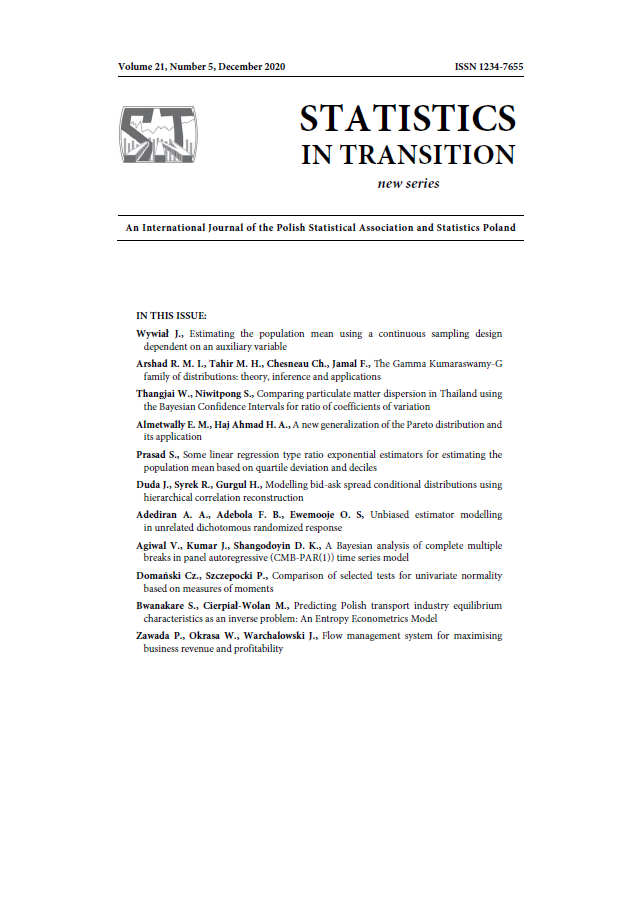ARTICLE
ABSTRACT
The business environment dynamics is governed by a high degree of uncertainty and risk; consequently, in a majority of cases investors face serious difficulties when making business decisions. Additionally, when detailed statistical information relating to industry is missing, any decisions may become a matter of highly risky conjectures. The present article proposes a simultaneous equation model based on the entropy econometrics estimator for recovering some key industrial subsector long-term equilibrium characteristics in the situation where only sparse, insufficient statistical information is available (e.g. only aggregated data on the whole industry). The model is applied to the transportation equipment manufacturing industry in Poland, which is composed of eight sub-sectors. As a result of the above procedure, an observation has been made that all firms from different sub-sectors have to increase their steady-state concentration ratios, while the highest concentration corresponds to the lowest increase in profitability. The model outputs conform to the market tendency in this sector and should lead to further applications of the NCEE methodology in business activity on a worldwide scale.
KEYWORDS
transport industry, inverse problem, econometrics, non-extensive entropy econometrics
REFERENCES
ABE, S., BAGCI, G. B., (2004). arXiv:cond-mat/0404253.
BORGES, E. P., (2004). Physica A, 334, 255.
BOTTAZZI, G. et al., (2007). Invariances and Diversities in the Patterns of Industrial Evolution: Some Evidence from Italian Manufacturing Industries, Springer, Small Business Economics, 29, pp. 137–159.
BWANAKARE, S., (2014). Entropy, 16, pp. 2713-2728.
BWANAKARE, S., (2019). Non-Extensive Entropy Econometrics for Low Frequency Series. National Accounts-Based Inverse Problems. Berlin, Boston: De Gruyter, Web. Retrieved 8 Mar. 2020, from https://www.degruyter.com/view/product/506062.
CHAMPERNOWNE, D. G., (1953). The Economic Journal, Vol. 63, No. 250, pp. 318-351.
GABAIX, X., (2008). Power Laws in Economics and Finance. Retrieved: http://www.nber.org/papers/ w14299.
GOLAN, A., JUDGE, G. and MILLER, D., (1996). Wiley in Chichester, England.
GOLAN, A., PERLOFF, J. M., (2001). University of California, Berkeley, USA. GUS, http://old.stat.gov.pl/gus/publikacje_a_z_PLK_HTML.htm.
JAYNES, E. T., (1994). Washington University.
MANTEGNA, R. N., STANLEY, H. E., (1999). Cambridge University Press, Cambridge.
TIKHONOV, A. N., ARSENIN, V. I., (1977). John Wiley & Sons.
VENKATESAN, R. C., PLASTINO, A., (2011). arXiv:1102.1025v3.
TSALLIS, C., MENDES, R. S. and PLASTINO, A. R., (1998). Physica A., Statistical Mechanics and its Applications, North-Holland.
TSALLIS, C., (2009). Springer, Berlin.
